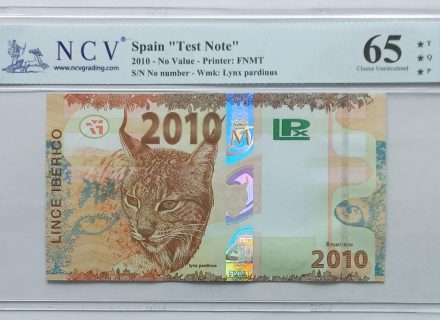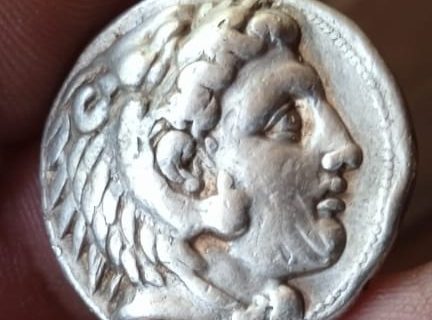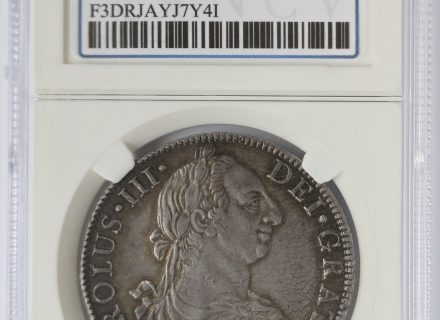We had the pleasure of talking to Yeray Páramo, José Molina Escribano, Rafa Zahiños, and Javier García-Ortiz Cebeira about their collections, their views on the numismatic market, and they gave us some tips that will be useful to anyone who wants to venture into this hobby.
YERAY PÁRAMO
Talking for an hour with an experienced collector can teach you more than reading three books on numismatics
Yeray, from Las Palmas de Gran Canaria, is a coin collector thanks to his grandfather, who gave him 2 cents of the Provisional Government and a dime of the United States when he was only 8 years old.
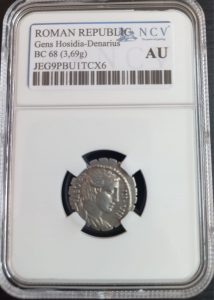 What do you specialize in? What do you collect?
What do you specialize in? What do you collect?
What I like most is Castilian coins from the late Middle Ages to the 19th century, and gold is what motivates me the most at the moment. The Austrian copper coins were a challenge for me at the time and I spent a lot of time on them, although aesthetically I never liked them and I don’t collect them either. Outside that timeline I especially like the Visigothic tremises.
What mistakes do you recognize from the beginning? Any advice for the new ones?
My worst mistakes have been related to cleaning: I have spoiled and depreciated coins because I didn’t know how to clean them or because I cleaned them without them needing it. I advise new collectors to read and listen carefully to more experienced collectors. Sometimes you learn more by talking to someone for an hour than by reading three numismatic books. To analyze many coins, if it is in person, it is much better to get a more accurate idea of what they like and get used to the sight of real coins. They should do research on minting techniques and mint work so they will understand the defects or virtues that a coin may have from its origin, and it will also help them discover counterfeits. I would also advise them not to rush into buying coins compulsively but to spend time with each piece, analyze it, and study its historical and technical context.
How do you see the market evolving and where are we headed?
I think that the future of high quality coins (EBC or higher) will lay in grading companies; we have been seeing this for some years now in international auctions of the highest level, and increasingly in Spanish auctions. It is an mandatory step because the market rewards encapsulated pieces with a high grade because they have been analyzed and graded by internationally recognized companies with an objective and precise scale, such as Sheldon. An encapsulated coin increases its value exponentially at auctions, and every seller wants to maximize his profit. There may even come a time when an uncirculated coin will be excluded from the international market and will not be accepted by many auctions. In fact, it is already the case that many collectors are not buying coins without a slab.
On the other hand, we are seeing that mediocre pieces that nobody wanted until two years ago, such as hard columnar coins with severe oxidation or evident welding and perforations, have become interesting to certain collectors who are forced to buy them because it is impossible to acquire medium or low quality pieces without these defects, since they have skyrocketed on the market. With the exception of very wealthy collectors, the rest of us are forced to lower the level of quality and beauty of our collections or significantly reduce the number of pieces we include.
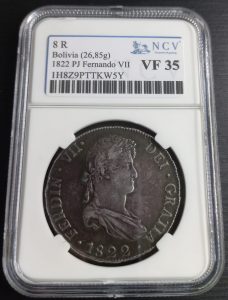 You are talking about price increases, why do you think that is the case?
You are talking about price increases, why do you think that is the case?
Coins always go up, we collectors pretend to be surprised and complain that we should have bought them a earlier, but the reality is that a year earlier they also seemed expensive to us and that they had gone up. It is true that since the pandemic this increase has been more obvious and sudden, I think that was because people couldn’t indulge themselves in dinners out, pleasure trips and other daily whims weren’t possible, so people spent money on other hobbies that were available: those who liked watches bought a Tag Heuer and those who liked coins had more money to put into auctions. Another factor that has had an impact, and has always been the case, is the arrival of new collectors, already experienced collectors who increase the level of purchases, etc. I also believe that many professionals are forced to buy at auctions because many of their suppliers no longer bring coins to them, but give them to the auction houses, and they no longer have so many coins, or at least high quality coins. This is a factor that may also have influenced the increase in prices.
Could we be facing a numismatic bubble?
There are certain periods or series that have benefited from this meteoric rise in prices and I believe they are in a bubble and will eventually go down. One example is the Visigothic tremises. But the most internationally sought-after pieces, such as Spanish hard coins from American mints or Macuquino gold, to name two examples, will maintain these prices or even continue to rise naturally. I always refer to quality pieces, because in the last 10 years, rarity has been relegated to second or third place, and it is the quality and beauty of a coin that determines its value to a greater extent. In fact, there are collectors who buy their coins without paying attention to the date or mint, only to the condition, beauty and quality of the mintage.
What is the rarest piece you’ve seen or you have?
The rarest piece I have ever seen was a 20 maravedis dobla of Henry II with no mint mark, I only know of one other that belonged to the Caballero de Yndias collection. As for my coins, the rarest is a Suinthila de Acci tremis with title and mint name different from the normal type, 3 known specimens.
—
JOSÉ MOLINA ESCRIBANO
To access an international auction with a single click has its advantages, but also its disadvantages.
From Blanca, 35 km from Murcia, he has been a lover of antiques since his childhood, when he kept everything that caught his attention and that he could without his mother throwing it away. His passion for numismatics started when he was 30. He began studying, researching, and compiling catalogs, books, and pieces for his collection, which he describes as “colorful, extensive, and suitable for studying any period of our history.
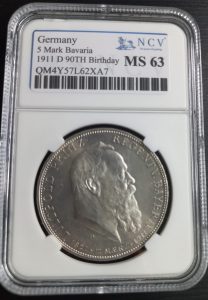 What is your weakness?
What is your weakness?
For all that it has meant to our history, I would highlight the Andalusian period. These almost eight centuries of Al-Andalus offer a lot to analyze numismatically. Not everyone dares to learn and study it because of its complexity, the Arabic inscriptions and the scarcity of images. It is a period full of surprises to be discovered”. Logically, these Andalusian pieces represent more than 50% of my collection.
What mistakes would you avoid if you could start all over again?
Making mistakes in numismatics is a challenging task to avoid, either in purchases, states, cleaning, or simply how to maintain and store a collection. For this, it is always advisable to have a “godfather,” one or more people with remarkable experience who we trust will be the best support before taking new steps, and even more if they are expensive. Any doubt you may have must be solved before taking any further steps; otherwise, you will be disappointed and risk not moving forward in this exciting world. Asking questions as many times as necessary, along with a good private investigation, will give you answers to almost all your doubts. We agree that the means we have at our disposal today were unthinkable a few years ago; the facilities to buy and sell are greater every day and from anywhere in the world. Being able to access with a click to any international auction is a pro but also a con. Each country has its purchasing level and economic situation when bidding in any auction. It is not the same to have to fight in an auction with people with the same purchasing level as you, than people to whom those prices seem to be small change (there have always been rich and poor, but now there are also the countries and currencies factors).
Any particularly rare piece that you would like to tell us about?
In my collection I have an unpublished handus of Zirí Ibn Atiyya, year 338, Fez mint, recognizing only Hisham II (full fitna against Almanzor), plus some other very scarce dirhams, of which no more than 5 pieces are known, with mints unknown so far. As I said, it is a period full of surprises waiting to be discovered.
__
RAFA ZAHIÑOS
We may see a price stabilization but not a fall
Also from a small town, this time in Badajoz, Valverde de Leganés and bordering Portugal. He was always curious about coins watching his grandfather, but his passion was awakened by helping his father with the sheep. While moving a clod of earth, he found a 25-cent coin from 1934 (II Republic), which was the beginning of his collection. “I felt it would be my best hobby and I was not wrong”.
What is your numismatic expertise?
Spanish coins, and within this category the Catholic Monarchs and the Habsburgs are my favorites. Although I have a weakness for all Spanish things in general. I collect selected pieces, with unknown variants, in top quality, whenever my budget allows it. If I had to define myself, I would say I am a rarities collectir with some high quality pieces.
What would you do differently if you could?
I would not get carried away by other people or fashions. You have to be clear about what you want, how you want it, and how you can get it without personal or economic effort. That is my advice to anyone starting to collect: just get what you can. If you want to collect cheap pieces, go ahead, that will make you know over time what you want in the future. At the beginning we like almost everything, but eventually we become selective in terms of preservation and in collecting in one way or another, either in a completist way, by types, errors, variants… There are several ways of collecting and all of them are good.
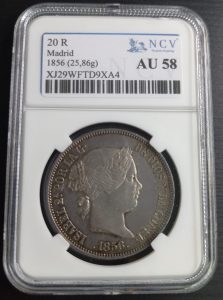 How do you see numismatic collecting scene?
How do you see numismatic collecting scene?
It is definitely growing, with a trend that has been well above market forecasts for several years. We have not reached the ceiling yet, we see it in auctions, numismatics, conventions… prices have doubled and tripled, so we have to wait for the numismatic market to settle down. I doubt that there will be a drop in prices. We are heading towards a stabilization of prices that has not yet arrived, we have to wait and be patient.
Prices have gone up a lot, more in some periods than in others, but an increase is general in all periods, due to the substantial increase of collectors, new collectors and, of course, new investors. The latter do not know how to collect, but they know how to hoard pieces that will be kept indefinitely as an investment. In all cultures and countries there have always been economic recessions. That is why in ancient times coins were kept because they were made of precious metals, silver and gold, they represented a security for those who owned them; today it is the same but as a safe investment. As I see it, another important detail is the increase of numismatic studies and social networks. There are more and more collectors because more is known about the subject. Thanks to researchers and their works, numismatic collecting has become more interesting and attractive for many people.
Do you think we are in a bubble?
I think so, yes. Although it will last a bit more, in my opinion prices won’t drop anyway. We may see stabilization, but not soon.
And finally, a special piece that you remember fondly?
The rarest piece I have seen, from my point of view, is a cinquentín struck in the Real Ingenio, beautiful for its workmanship, which I enjoyed in the Archaeological Museum of Segovia. And already in my collection, to mention one, an 8 reales from the Cartagena de Indias mint, struck by the assayer de la Era. This piece has an H under the face value because the mint opener thought that de la Era was written with an H, so he struck the H and not the E, although a Cartagena de Indias is rare to see.

